

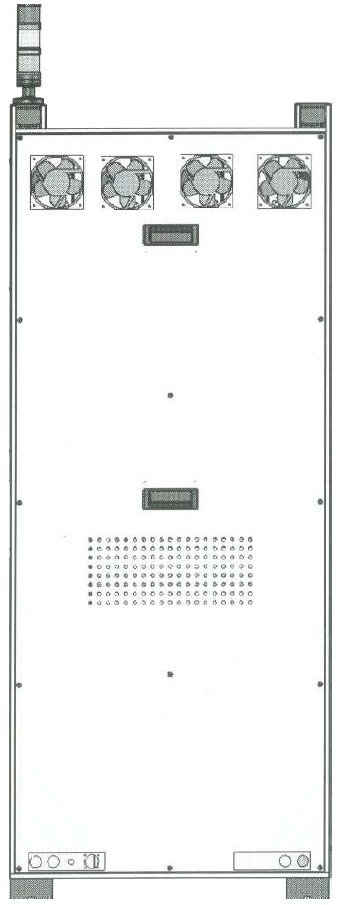
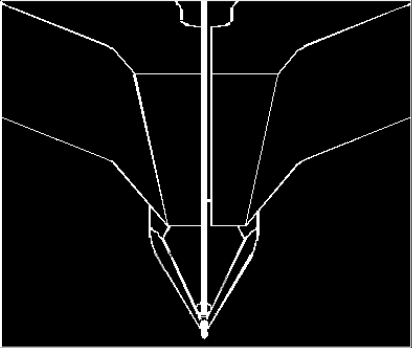

|
||
|
|
Research ATLAS Inner Tracker upgrade at the HL-LHC The High-Luminosity upgrade of the LHC (HL-LHC) is CERN Council's top priority particle physics programme for Europe and the laboratory. The several billion CHF programme was formally approved by CERN Council in 2016 and now fully underway. 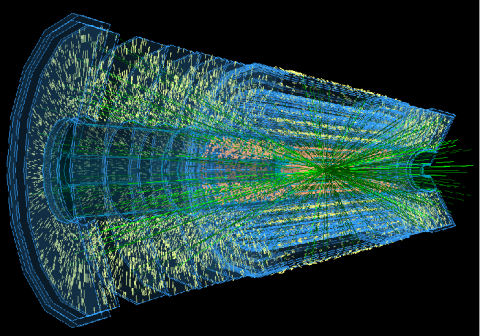
Figure 1: simulated event at the HL-LHC. The HL-LHC is due to start operation in the second half of this decade with a centre of mass energy of 14 TeV and a “levelled” luminosity of 5-7.5x1034 cm-2s-1, delivering an average annual number of proton collisions ten that at present. The increased luminosity will also result in ten times higher radiation levels and ten times higher data rates, posing stringent requirements on the design of the tracking detectors at the heart of the experiment. Figure 1 shows the very large number of tracks coming from up to 200 high energy proton-proton collisions in every 25 ns crossing of the HL-LHC bunches. These tracks will need to be resolved by much more finely segmented detectors than the ones of the current ATLAS Inner Detector (ID). 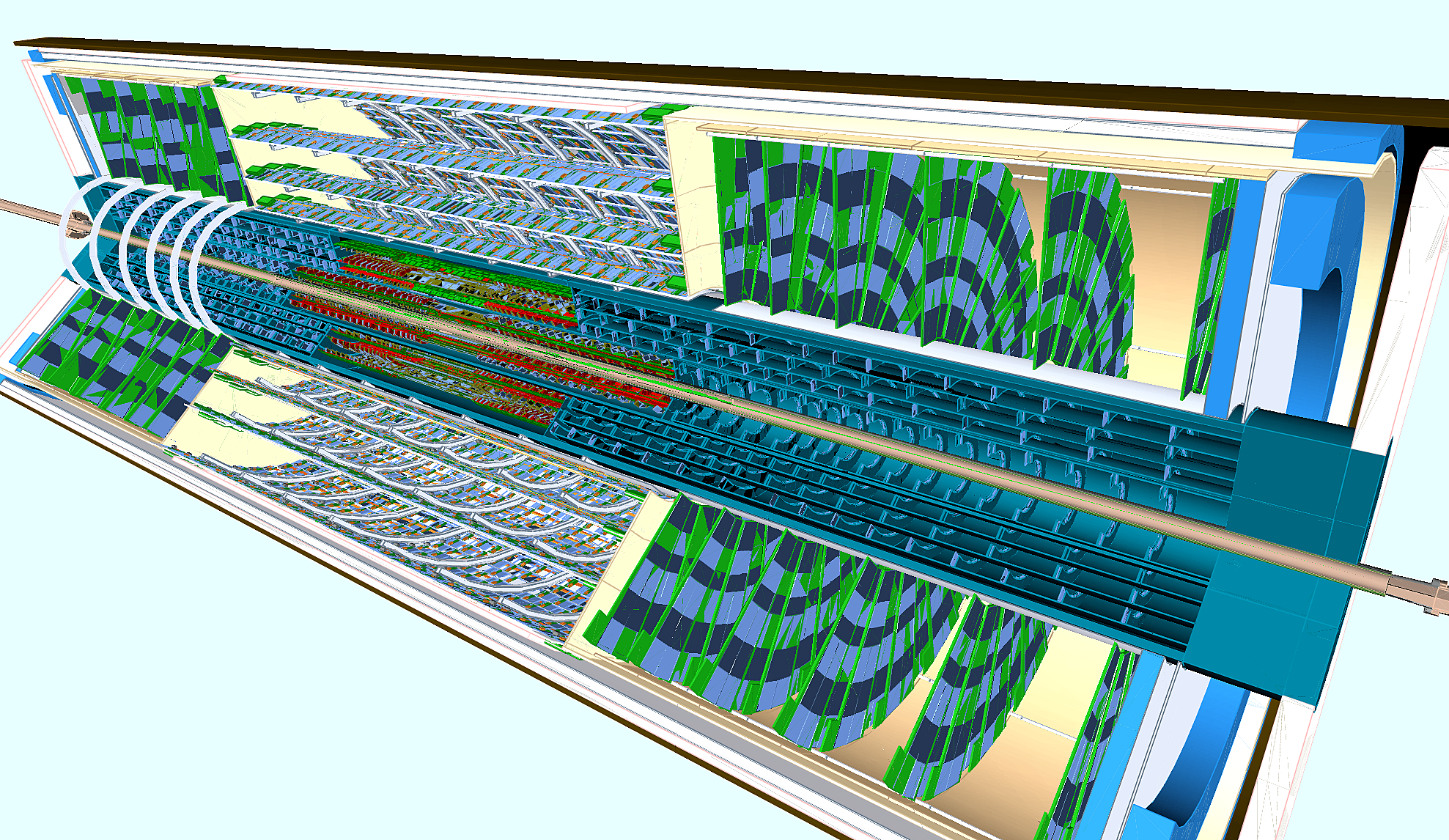
Figure 2: A visualisation of the ITk showing concentric To match the requirements in terms of radiation hardness, readout speed and granularity at the HL-LHC, the ATLAS experiment is preparing a complete replacement of the current ID. The new ATLAS Inner Tracker (ITk) will be an all-silicon detector, with pixel sensors close to the interaction point and strips sensors at larger radii, covering a surface of roughly 180m2 of which 165m2 will be strip detectors. It will be designed to sustain over 10 years of operation in the hostile environment at the HL-LHC. 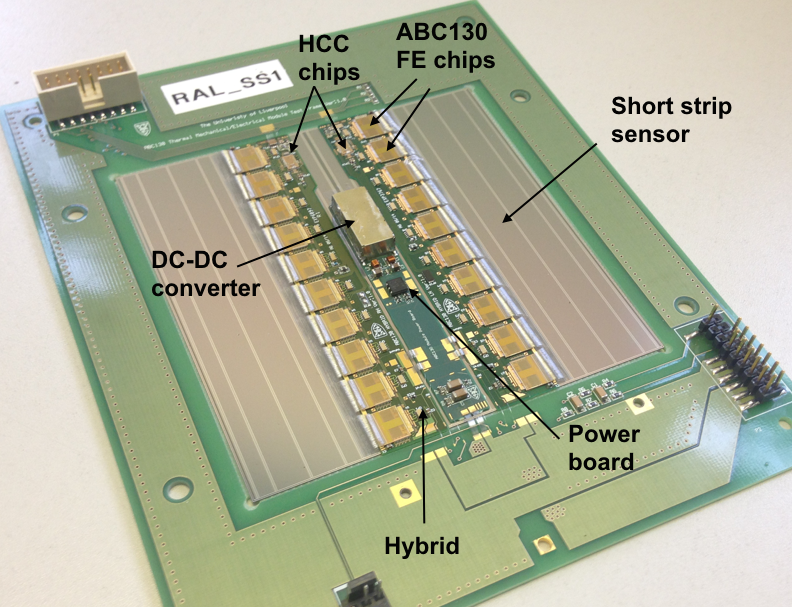
Figure 3: Fully assembled short-strip barrel module with Figure 3 shows a picture of an ATLAS ITk strip detector module. The module consists of a 10 cm x 10 cm silicon micro-strip sensor readout by front-end electronics on a low-mass flex circuits, the so-called hybrid. Each module has 5,120 channels readout independently 40 million times per second. With the new BILPA facility, the Birmingham ITk group will be able to deliver the full production of hybrid assembly, module assembly and detailed quality assurance for the ITk strip detector. BILPA will be central to the UK’s ability to deliver its share of the required 20,000 silicon strip modules. The Birmingham MC40 cyclotron was critical to proving radiation-hardness of many components across the ITk and provides the main radiation testing with charged hadrons for the full international strip programme quality assurance throughout pre-production and production. Detector development for future collider experiments Particle physics has plans for projects that go beyond the reach of the HL-LHC, and R&D into new detector concepts is vital and being carried on across the world. One area is novel detectors incorporating electronics and sensors into a single object, Monolithic Active Pixel Sensors (MAPS), represent an area of research at Birmingham towards possible new facilities like the International Linear Collider (ILC) or e+e- Future Circular Collider (FCC). Furthermore, a proton-proton collider manifestation of the FCC is also being actively studied as a follow-on to the HL-LHC at much higher energies. For this, very radiation-hard versions of MAPS are being pursued in collaboration with designers at STFC and CERN, also with the view of possible utilisation in a range of longer-term HL-LHC programmes. Opposite to traditional MAPS detectors based on charge collection via diffusion, novel MAPS developments are based on charge collection by drift in a depleted volume in the sensor bulk to provide higher radiation hardness. Depleted MAPS development is enabled by recently available commercial CMOS technologies offering High-Voltage capabilities and High-Resistivity substrates (HV-CMOS, and HR-CMOS). These technologies offer low cost and high throughput suitable for production of future large scale detector system. Our current funded DMAPS projects are: - Development towards a Reconfigurable Monolithic Active Pixel Sensor in Radiation-hard Technology for Outer Tracking and Digital Electromagnetic Calorimetry - Precision Central Silicon Tracking & Vertexing for the EIC - EU funded AIDA2020 generic R&D on DMAPS developments - CMOS test beam at DESY with University of Utrecht - RD50 CERN based R&D in extreme radiation-hardness With RD50, Birmingham is also contributing to ultra-fast silicon detector developments in the context of radiation testing of trench isolated Low Gain Avalanche Detectors (LGADs). In addition, Birmingham is part of an STFC programme to develop LGAD technologies in the UK with Teledyne e2v Ltd. Medical applications Birmingham was a founder member of the Wellcome Trust funded PRaVDA consortium to develop radiation-hard charged particle tracking technologies from HL-LHC with Micron Semiconductors UK Ltd for use at the new national proton therapy facilities in the UK. The School of Physics and Astronomy is intimately linked with the Medical Physics department at the University Hospital Birmingham and activities for PRaVDA made frequent use of the MC40 facility for devices testing in proton beams and for verification of radiation-hardness. The follow-on project, OPTIma, is building towards specific requirements at the new NHS proton therapy facilities, particularly that at the Christie Hospital in Manchester. We are also working with the National Physical Laboratory, STFC and vivaMOS Ltd on detector systems for dosimetry at hadron radiotherapy facilities. Applications of particle physics technologies for a variety of areas, including different areas of medical imaging provide a third important strand of the ongoing BILPA activities. Our current medical application projects are: - PRaVDA (Proton Radiotherapy Verification and Dosimetry Applications international consortium) - OPTIma (Optimising Proton Therapy through Imaging) with University Hospitals Birmingham, Christie Hospital, the Universities of Lincoln and Manchester. - ENLIGHT (CERN led hadron therapy consortium) - STFC Network+ in Advanced Radiotherapy - STFC+NPL Enhancement of the UK Primary Standard for Absorbed Dose for Proton Radiotherapy with NPL, vivaMOS and STFC CMOS Sensor Design Group - Sensors for Hadron Therapy Micro-beam and FLASH - DMAPS tracking in pCT and beam profiling (with University of Bonn) - MonteCarlo tools for medical applications |

|
|
|